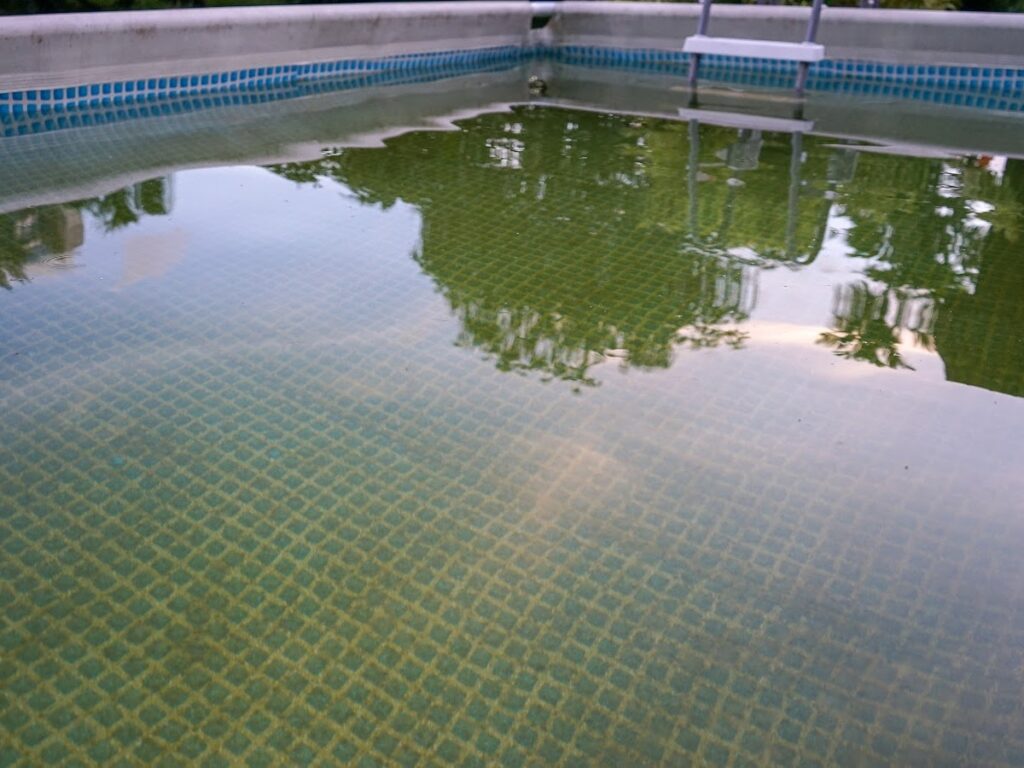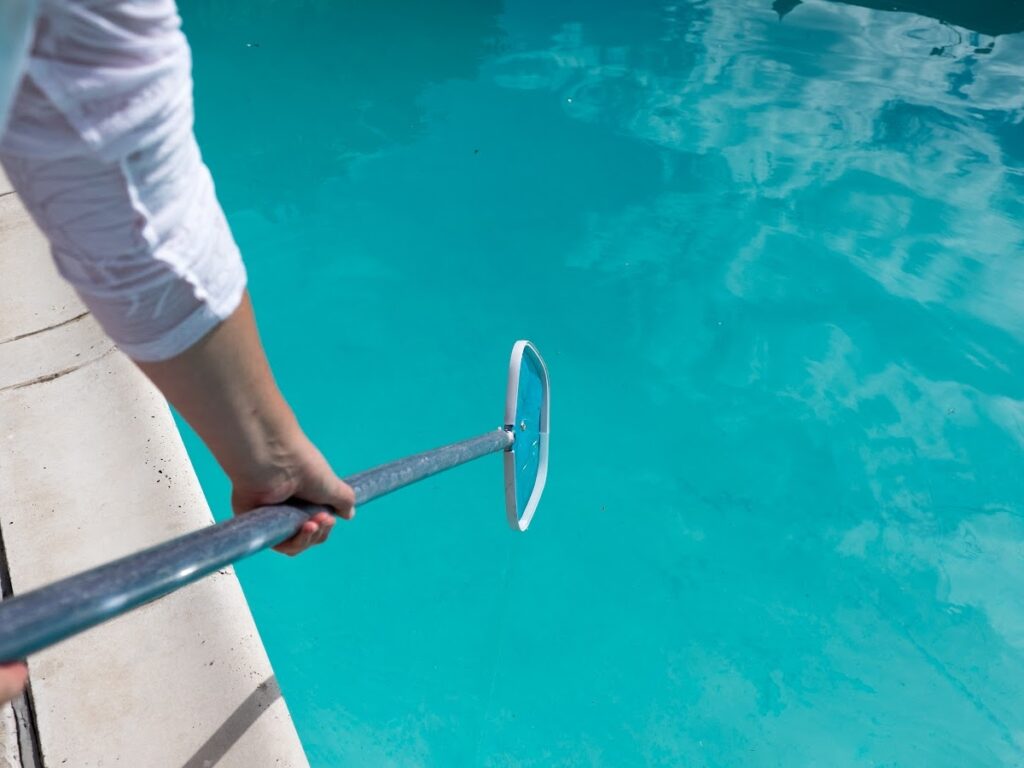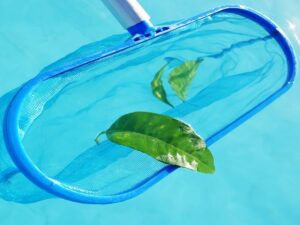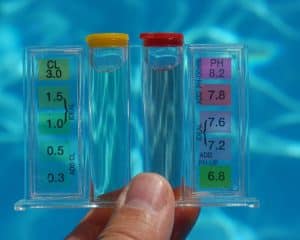Swimming pools provide endless hours of enjoyment, but maintaining their water chemistry is often surrounded by myths. Let’s debunk these misconceptions to ensure a safer and healthier swimming environment.
Myth 1: Stabilized Chlorine Is All You Need
The Importance of Balancing Multiple Factors
Many believe that using stabilized chlorine tablets exclusively is sufficient for pool maintenance. However, pool water balance involves multiple factors beyond just chlorine. pH levels, alkalinity, and calcium hardness are crucial too. Neglecting these can lead to corrosive water, scale formation, and ineffective sanitation. Achieving a harmonious balance ensures a comfortable swim and prolongs the life of your pool.

Myth 2: Test Kits Aren’t Necessary
Accurate Testing: The Foundation of Proper Pool Maintenance
Some think that a “good guess” is enough for pool chemistry. Water chemistry varies constantly due to weather, usage, and other factors. Test kits provide accurate readings of pH, chlorine levels, and more. Regular testing enables precise adjustments, preventing problems like cloudy water, skin irritation, and algae growth. It’s the foundation of maintaining crystal-clear water and optimal conditions.
Myth 3: “Chlorine Smell” Means It’s Clean
Understanding the Truth Behind the Odor
Contrary to popular belief, the “chlorine smell” isn’t an indicator of cleanliness. It’s a sign of chloramines, formed when chlorine reacts with sweat, urine, and other contaminants. These compounds can cause eye and skin irritation. A well-balanced pool with proper chlorine levels avoids chloramine buildup while efficiently sanitizing the water.
Myth 4: The Bigger, the Better – Pool Size and Chemicals
Tailoring Chemical Application to Pool Dimensions
Having a larger pool doesn’t mean using more chemicals. Pool chemical dosages are based on water volume, not pool size. Over- or under-dosing can result in imbalanced water chemistry. Tailoring chemical application to your pool’s dimensions ensures that every drop is effective, preventing waste and potential issues.
Myth 5: Adding Chemicals at Night Is More Effective
Proper Timing for Chemical Addition
Adding chemicals during the night doesn’t enhance their effectiveness. Sunlight helps chlorine work by breaking down organic matter. Adding chemicals during the day allows them to react more efficiently, maintaining consistent sanitation and preventing algae growth and harmful bacteria.
Myth 6: Natural Pools Don’t Need Chemical Balancing
The Science Behind Natural Pool Chemistry
Natural pools might seem exempt from chemical balancing, but they require a different approach. While they use plants to filter water, chemicals are still needed to maintain proper water balance. Without careful monitoring, natural pools can become breeding grounds for mosquitoes and algae, posing risks to swimmers.
Myth 7: Shocking the Pool Solves All Problems
When and How to Shock Your Pool Safely
Shocking a pool is essential, but there are more comprehensive solutions. Shock treatments eliminate chloramines and contaminants, but underlying issues like pH imbalance or poor circulation can persist. Regular maintenance and addressing the root causes of problems are vital for long-term pool health.

Myth 8: All Algae Are Harmless
Identifying and Treating Different Types of Algae
Not all algae are created equal. While some are harmless, others can be hazardous. Green algae, for instance, can make surfaces slippery, increasing the risk of accidents. Black algae can damage pool surfaces. Treating algae promptly and effectively requires proper identification and targeted treatments.
Myth 9: Chemicals Don’t Affect pH Much
Understanding pH Fluctuations and Chemical Interactions
Chemicals indeed impact pH levels. Chlorine, for instance, can raise pH levels over time. Neglecting pH adjustments can lead to issues like scale formation, cloudy water, and decreased chlorine effectiveness. Regularly testing and adjusting pH levels ensure balanced water chemistry.
Myth 10: Saltwater Pools Are Maintenance-Free
The Realities of Maintaining a Saltwater Swimming Pool
Saltwater pools are lower in chlorine, but they’re not maintenance-free. Salt cells still produce chlorine, and maintaining proper salt levels, pH, and alkalinity is crucial. Neglecting maintenance can lead to a buildup of chloramines, causing that distinct “chlorine smell” and affecting water quality.
Myth 11: “Swimming Pool Smell” Is Harmless
Addressing the Chemical Compounds Causing the Smell
The “swimming pool smell” isn’t benign. It’s caused by chloramines, which can cause respiratory and skin irritations. Proper water balance and circulation minimize chloramine formation, ensuring a safer and more pleasant swimming experience.
Myth 12: Home Testing Replaces Professional Analysis
The Role of Professional Inspections in Pool Maintenance
While home testing is essential, it doesn’t replace professional inspections. Professionals analyze water circulation, equipment functionality, and overall poor health. Regular professional assessments complement home testing, preventing hidden issues.

Myth 13: More Chemicals Can Speed Up Cleaning
The Delicate Balance Between Cleaning and Chemical Application
Using excessive chemicals doesn’t expedite cleaning; it can cause harm. Overdosing can lead to imbalanced water chemistry, skin irritations, and damage to pool surfaces. The key is a delicate balance between chemical application and proper cleaning practices.
Debunking these myths empowers pool owners to make informed decisions, fostering a safer and more enjoyable swimming experience. Remember, a well-maintained pool looks inviting and ensures the well-being of all swimmers.
Specializing in all things pool services, the team behind Finns Pool Services brings more than just technical expertise to West Palm Beach. Rooted in family values, this full-service company has not only built a legacy in top-notch pool care but also prides itself on its vast team of experts and its unwavering commitment to professionalism. With countless successful pool projects under their belt, they stand as a beacon of trust and quality in the heart of Florida. Dive into a world where dedication meets the deep end.




